 |
|||||||||||||
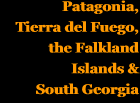 |
|||||||||||||
 |
|||||||||||||
 |
|||||||||||||
Chapter 13
A variety of industrial railways


The Corral blast furnaces (near Valdivia)
Historical background
On the south shores of the sea lochs leading to the Río Calle Calle, on the banks of which Valdivia is built, is a sheltered bay in which is located the Spanish colonial fortress of San Sebastián de la Cruz, built in 1645. It was the fifth domino to fall in the night-time attack by the Republic of Chile's forces lead by Admiral Lord Cochrane on the night of 3-4 February 1820.
In 1906, a French company, Les Hauts Fourneaux, Forges et Acieries du Chili, locally known as Alto Hornos de Chile, was created in Paris to build the first steel works in South America. Late in that year, the Chilean Government awarded the company a 100-hectare site (partly fiscal and partly expropriated private land) on which to build a steelworks (1).
Ore was to be brought in to a muelle by sea, and transported to a storage area within the parade ground of the old fortress, accessed by a tunnel through the walls, and to the works by a narrow gauge railway. The fuel for the works was to be wood, harvested in the hills around the area, and brought by a railway to the top of an incline plane down to the steelworks. In later years there was also an areal cable way.
The works included two 24-metre tall blast furnaces and four Cowper heat exchangers. As wood was to be used as fuel, a saw mill was provided at the upper level to cut the timber into planks of the appropriate size for the furnaces. Steel production started in 1910, and continued, a little erratically at times, till the mothballing of the works in 1958. However, the Valdivia earthquake of 22 May 1960 did so much damage as to render any further use of the works impossible, and the site was subsequently largely cleared.
The use of wood as a fuel was not totally successful, due, it is thought, to an assumption of its having a moisture content of 20%, based on German practice, whereas the local woods had a moisture content exceeding 60%. This led in time to a change in the fuel used to charcoal. A great deal of it was made by gangs of men who cut the trees in the surrounding forests, and made the charcoal according to the season. The charcoal was then sent by the railway to the top of the incline, from where is was conveyed to the steel works by the overhead cableway.
The railway
The railway operated on two levels. A lower level operated around the shoreline of the bay linking two muelles, one long one short, to the fortress and the works. At several hundred metres above sea level was another line, thought to be more than 10 kilometres long, built to bring, first the wood, and then the charcoal to the steelworks, from an initial area of 10,000 hectares (nearly 40 square miles) of forest.
The gauge of the railway has not yet been confirmed. Certain some of the track at Corral was of 75cm gauge, as were one batch of locos, but another batch and some of the photos below seem to have been of 1 metre gauge.
No views showing trains in operation have yet been uncovered. Those views which we have found are all on the web.
This first view shows track between the old Spanish fort and the sea. The third image, below, was taken looking the other way along this length of track. The 1960 Valdivia earthquake resulted in a substantial rise in sea level here, and this flat area has been washed away, with the shoreline now right at the base of the fort’s walls.
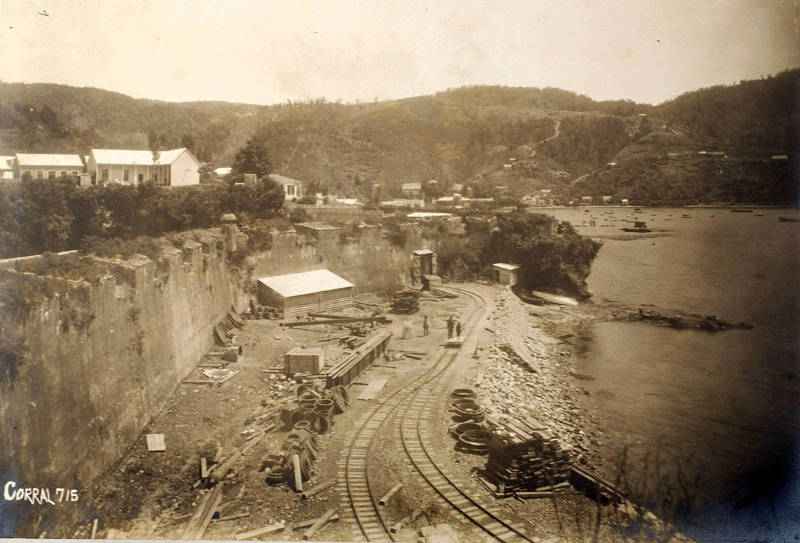
This is a modern view, looking down from the ramparts on to the parade ground with, in the background, the mouth of the railway tunnel leading through the castle's walls (2).
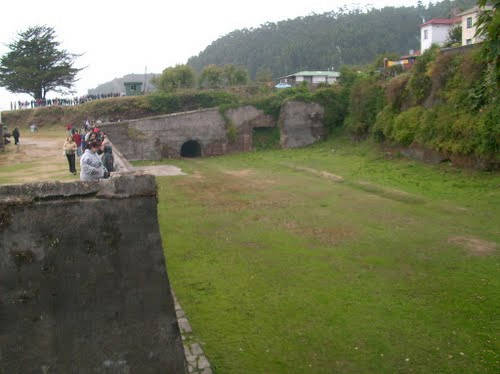
This post card view, thought to date from about 1910, but posted in 1915, shows the two muelles. The long one in the background is home to two steam cranes, and appears to have been built, unusually, of reinforced concrete, while the shorter one is of the more usual wooden construction. The railway track can be seen running along at the foot of the cliff and on to each of the muelles.
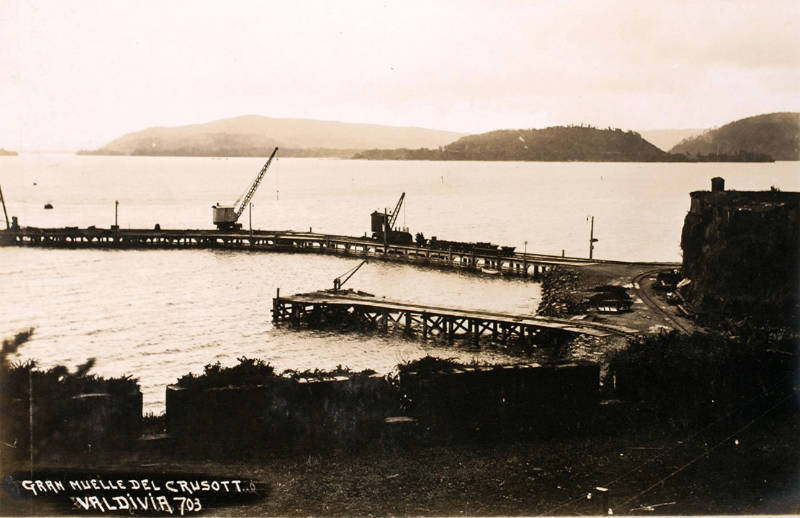
This is another picture post card, said to date from 1914. It would appear that there is ongoing work, perhaps associated with modifications discovered to be necessary after the early none too successful operation. The shed to the right is for the storage of wood fuel. From the left foreground heading in to the picture are a number of tipper wagons of a style more usually associated with a temporary Decauville line of 60 cm gauge, which could be a temporary one used by the contractor, or they could be operating on 75cm gauge track.
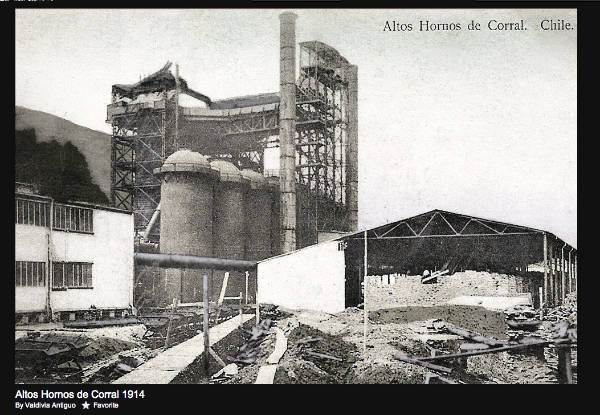
This is a view showing the main entrance to the works and rail tracks on two levels. In the foreground is a flat wagon.
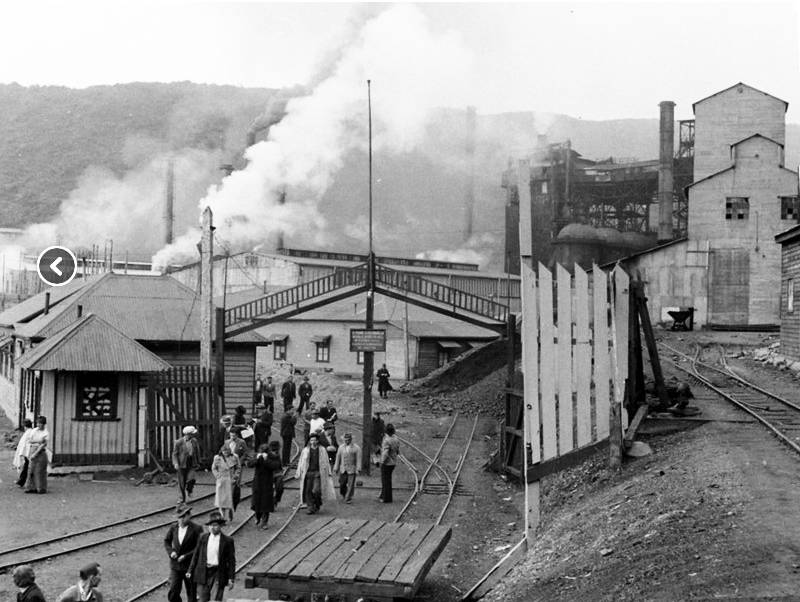
Another view, taken in 1941, possibly at the same time as the previous one, shows a group of people leaving the works walking along the space between two tracks. The sleepers appear to be unusually long for the gauge which is thought to be probably metre gauge. The boy nearest the camera is wearing a hat and poncho and, having bare feet, is carrying a stew-pot with a lid; perhaps he had just delivered his dad's dinner (3).
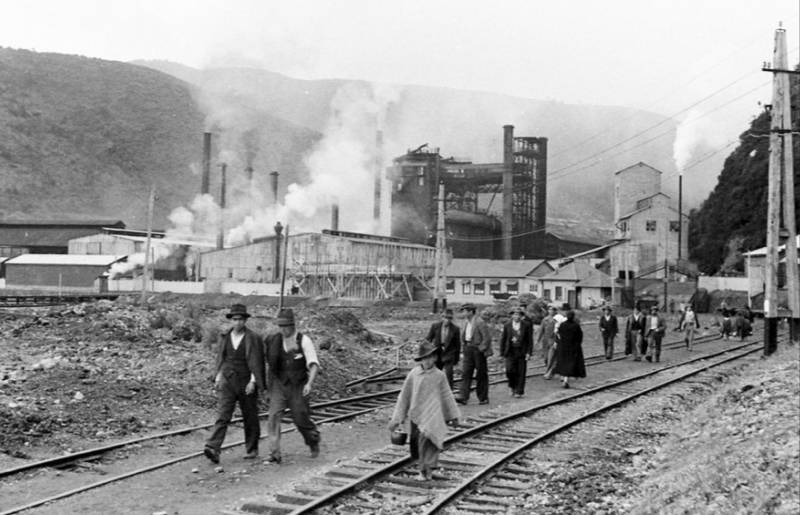
Finally there is a view taken during the local church's pilgrimage in 1964, showing a scrap yard in which can be made out the remains of at least two steam engines, a diesel, and a couple of side discharge wooden-bodied hopper wagons. The two more complete engines are clearly not the same as each other (4). The nearer one is an O&K, whilst the one behind (which has lost its upper cab and roof) is one of the La Meuse engines.
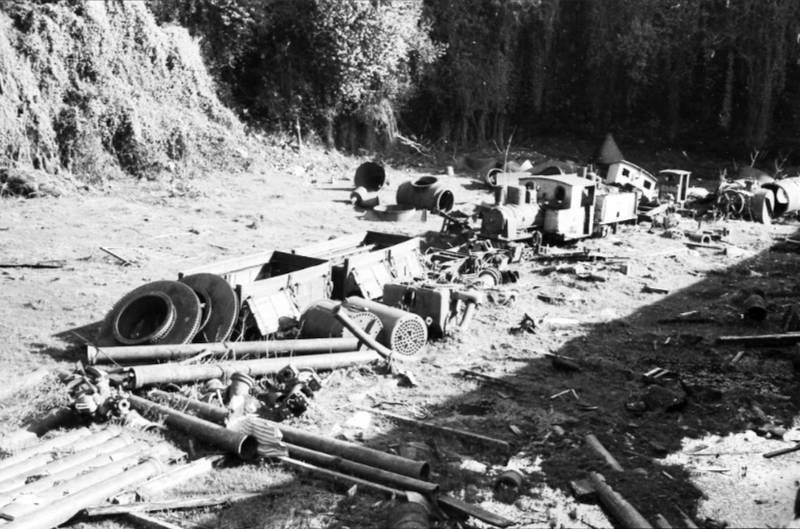
Locomotives
The Belgian builder La Meuse is recorded as having built two locomotives (works numbers 2178-9) in 1909 for Les Hauts Fournaux et Acieries du Chile, but without any information about wheel arrangement or gauge. Their standard small 0-4-0T locomotives had square spectacle plates and Belpaire fireboxes, so would not be incompatible with the one in bits further from the camera in the photo above (5).
The La Meuse 0-6-0T loco pictured below shows some of the builder’s standard characteristics, such as the plain rectangular tanks with a cut-out beneath for the valve gear link. It is not known what wheel arrangement the locos at Corral possessed but 0-4-0t or 0-6-0T seem likely.
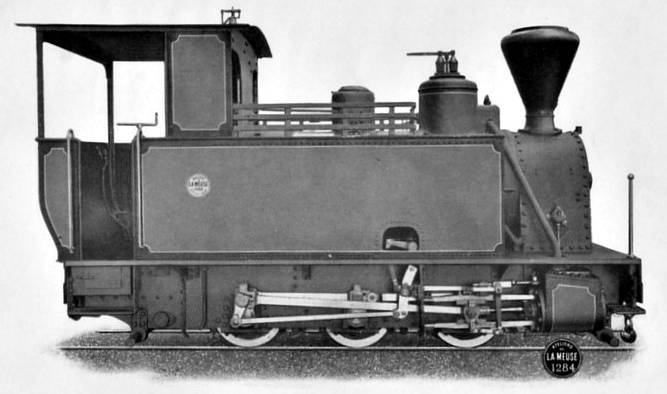
The German firm, Orenstein & Koppel, are known to have supplied three 0-6-0Ts of 125 hp (works numbers 5196-8), in 1911 to August Gaultier of Paris for Chile. Since the works at Corral was essentially French, using French expertise, it might be natural to think that this was their intended destination. These locomotives were specified as being for metre gauge, which is not incompatible with the apparent gauge of the track seen in some of the above views (6).
Sources
1 LOS ALTOS HORNOS DE CORRAL – La primera Industria Siderúrgica de Sudamérica. INSAT Valdivia, blog alumnos de turismo, 2010. http://insat.blogdiario.com/1275772080/ (entered 2/11/12).
2 Photo by R. Castillo found on Panoramio: http://www.panoramio.com/photo/61863698 (entered 2/11/12).
3 History of Valdivia blogspot: http://historiadevaldivia-chile.blogspot.co.uk/2011/10/valdivia-antiguo-8.html (entered 2/11/12).
4 Found in Archivo Histórico José Vial on flickr: http://www.flickr.com/photos/archivo-escuela/5955774652/ (entered 2/11/12).
5 Builder's list of La Meuse locomotives.
6 Builder's list of O&K locomotives.
18-3-2021